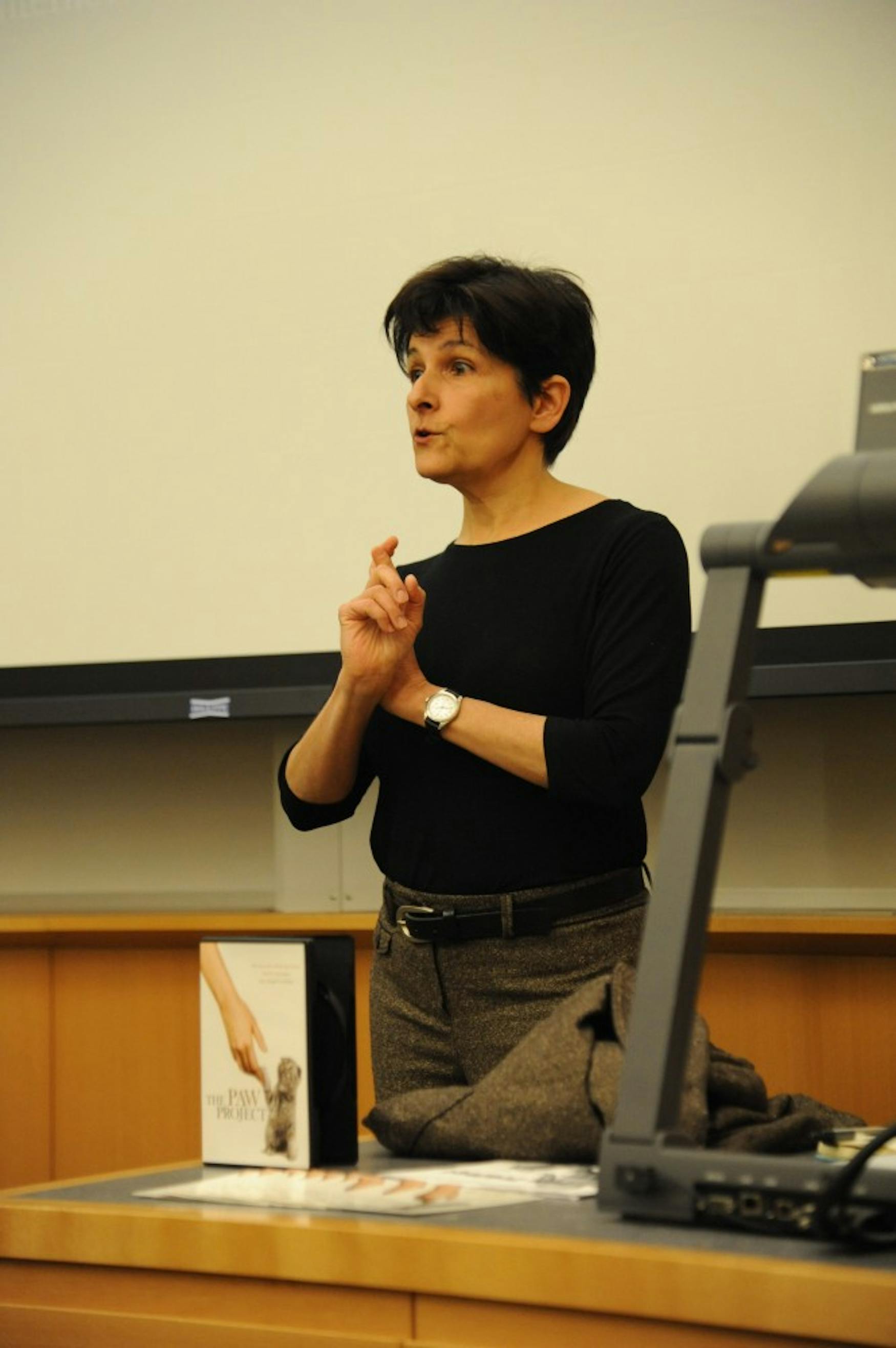Animal behaviorist addresses issue of declawing housecats
The Paw Project, a 2013 documentary which tells the story of the movement toward banning the practice of declawing exotic and domestic cats in the United States, was screened by the Animal Appreciation/Pre-Veterinary Society this past Sunday. Dr. Stephanie Borns-Weil, an animal behaviorist at Cummings School of Veterinary Medicine at Tufts University, was the guest speaker at the discussion that was held immediately afterward.
The documentary, which ran for about an hour and 15 minutes, opened with Dr. Jennifer Conrad, a leader of the anti-declawing movement, posing the question: “Why would anyone want to declaw a cat?” She also briefly touched upon the issue of understanding declawing as a medical practice. Cat owners often make the decision to declaw their cats to prevent their furniture from being scratched up or their children from getting hurt.
Conrad explained the mechanism of the declawing procedure, which essentially involves amputating a cat’s claw along with one of its joints. Conrad said that she often works in exotic animal sanctuaries, places that serve as shelters for illegally owned animals such as giraffes and elephants as well as large cats such as lions and tigers. While working there, she observed that declawing often leaves cats crippled.
Conrad said that she wanted to find a way to mitigate the effects of the declawing surgery.
Together with a veterinarian who specializes in surgery, Conrad developed a procedure that would remove the nail that was growing underneath the skin of several exotic cats who had been declawed, which was the cause of the extreme pain and the loss of functionality of their paws. Only a few days after the procedures were performed, the cats were walking and playing. After performing the procedure successfully several times in the Southern California area, Conrad received several calls from other exotic cat sanctuaries about the large numbers of exotic cats in need of the new procedure all over the country. In response, Conrad started a nonprofit organization that she named the Paw Project.
According to Conrad, veterinarians who are willing to perform declawing procedures stand to make several thousands of dollars per procedure and, as a result, often recommend it for every cat.
The film discussed the fact that the American Veterinary Medical Association has vehemently supported the practice of cat declawing. The documentary showed several promotional videos featuring veterinarians who worked at renowned institutions such as the Chicago Cat Hospital, promoting the practice of declawing. In all of the videos, the seal of the AVMA was prominently displayed next to each doctor’s name. The veterinarians made claims in favor of the traditional declawing procedure—for instance, they claimed that if a cat is not declawed, its claws can get caught in objects, not only causing the animal pain but also destroying the object in the process. The veterinarians in the videos also highly recommended the declawing procedure be done as early as possible.
Despite opposition from the AVMA, in 2009 the Paw Project successfully worked with the city legislature of West Hollywood, Calif. to ban cat declawing. West Hollywood was the first city in North America to outlaw the practice and in 2009, eight other cities in California, including San Francisco and Los Angeles, followed suit. According to Conrad, the ban has saved two million cats from being declawed.
In the discussion following the documentary, Borns-Weil said that the success of the Paw Project is indicative of a new way of thinking of pets in society, in which pets are seen as family members.
Borns-Weil explained that much of the AVMA’s opposition to banning declawing comes from the fact that the AMVA tends to focus on production animals like cows and pigs rather than domesticated animals, and as a result, claimed that they tend to think of animals as property.
Audience members, many of whom are pre-veterinary students, asked questions about the specific mechanisms of the declawing procedure. They also asked general questions about cat behaviors and how exactly declawing changes the way that cats behave. Borns-Weil concluded by saying that the issue of declawing is so central to people in general because it connects to the larger issue of how human beings treat other living beings.



Please note All comments are eligible for publication in The Justice.